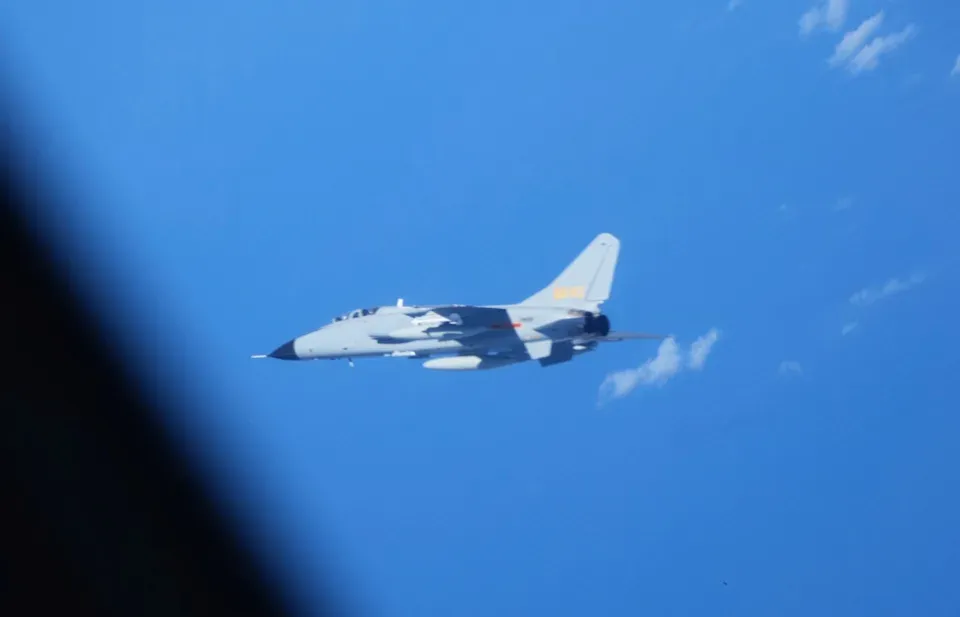Japan’s Growing Concerns Over China’s Military Maneuvers
In recent months, the relationship between Japan and China has grown increasingly tense, as Tokyo expresses concerns over Beijing’s expanding military activities. The Japanese government has formally lodged complaints regarding the increased aerial encounters involving Chinese fighter jets, and Japan’s latest defense document highlights a troubling trend: China’s military movements are now considered the most significant strategic challenge for Japan. These developments indicate a broader context of apprehension among Japan’s policymakers as they navigate a rapidly shifting geopolitical landscape.
China’s Military Moves: A Source of Concern
Japan has been vocal about its worries regarding China’s military expansion and aggressive posturing in the region. The East China Sea, for instance, has become a flashpoint of contention as China asserts its territorial claims. Japanese military leaders have warned that China’s military capabilities are not just growing in numbers, but are also becoming increasingly sophisticated, prompting concerns about the potential for miscalculation in the tense airspace.
Professional Relations Turn Tense
Adding to the alarm is a recent incident involving Chinese fighter jets that prompted an official complaint to Beijing’s Ambassador to Japan, Kong Xuanyou. This diplomatic action reflects Japan’s growing frustration with what it perceives as provocative behavior by its neighbor. Reports indicated that Japanese Self-Defense Forces were compelled to scramble fighter jets in response to Chinese aircraft entering disputed airspace, escalating regional tensions further.
The Defense Paper: Increased Concern Over Probing Activities
Japan’s latest defense paper, released earlier this year, was particularly striking in its assessment of China’s military activities. It noted a marked uptick in naval and aerial ‘probing’ activities in Japan’s southern airspace and its territorial waters. The report underscored concerns about violations of Japan’s airspace, which had reportedly increased significantly over the past few years.
This documentation aligns with Japan’s broader national defense strategy that aims to bolster its capabilities and alliances in response to evolving threats. The rise of military power from China is often cited as a catalyst for Japan’s re-examination of its defense posture, including its stance on collective security arrangements with allies like the United States.
Historical Context: Japan-China Relations
Historically, Japan has navigated a complex relationship with China, marked by episodes of tension intertwined with periods of cooperation. The legacy of World War II continues to cast a long shadow over these interactions, and recent years have witnessed a rise in nationalist sentiments in both countries, adding a layer of complexity to foreign relations.
In 2010, a territorial dispute over the Senkaku Islands—a group of uninhabited islands in the East China Sea—led to a diplomatic feud that included boycotts and economic measures. China’s foreign policy, particularly regarding territorial integrity and maritime rights, has since evolved to become more assertive. This trend of assertiveness underscores the challenges observed in the Japan-China dynamic today.
Japan’s Defense Strategy: Adapting to New Realities
The Japanese government has reacted decisively to these shifts in the security landscape. Under the leadership of Prime Minister Fumio Kishida, Japan aims to boost its defense spending significantly, signaling a shift away from its post-war pacifist stance. The goal is to enhance the Japanese Self-Defense Forces’ capabilities to match the challenges posed by an increasingly powerful and assertive China.
This strategy includes plans to procure a range of advanced military assets, such as long-range missiles, missiles defense systems, and improved surveillance capabilities. Collaborations with allies—including the United States, Australia, and the United Kingdom—are also being strengthened through joint exercises and enhanced military collaborations.
International Response: Alliances and Partnerships
While Japan is taking actions to bolster its own security, the international community has responded with an array of initiatives aimed at countering China’s influence. Australia has engaged in diplomatic and military partnerships with Japan, while the United States continues to reaffirm its commitment to the security of Japan through the U.S.-Japan Mutual Defense Treaty.
In this context, the Quadrilateral Security Dialogue (Quad)—which also includes India—has been a crucial component of regional security discussions. This coalition aims to provide a counterbalance to Chinese expansion; increasing maritime security collaboration is one of its central tenets. The Quad’s meetings and joint exercises symbolize a significant shift towards a more coordinated effort to address regional security challenges arising from China’s military endeavors.
The Path Forward: Navigating Tension and Engagement
As Japan grapples with these tensions, it faces the complex task of balancing its defense needs while engaging in constructive dialogue with China. Diplomatic efforts to engage with Beijing are crucial, as outright hostility could lead to unintended escalations and conflict, jeopardizing regional stability.
Furthermore, Japan must consider its approach to historical grievances and current territorial disputes, ensuring that while it maintains a robust defense posture, it also seeks avenues for communication and trust-building with China. Such a dual strategy could help mitigate risks and foster a more stable regional environment.
Conclusion: Implications for Regional Dynamics
The relationship between Japan and China will remain a vital focal point in the Asia-Pacific region. As Japan increasingly sees China’s military activities as posing the greatest challenge to its national security, the international implications extend beyond bilateral relations. How Japan navigates these challenges will significantly shape the future dynamics of power in Asia. The call for preparation, vigilance, and strategic partnerships suggests that the Japan-China relationship will continue to evolve, driven by an intricate mix of competition, cooperation, and historical legacies.







